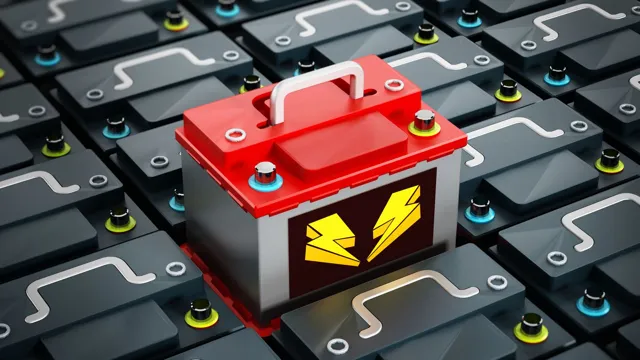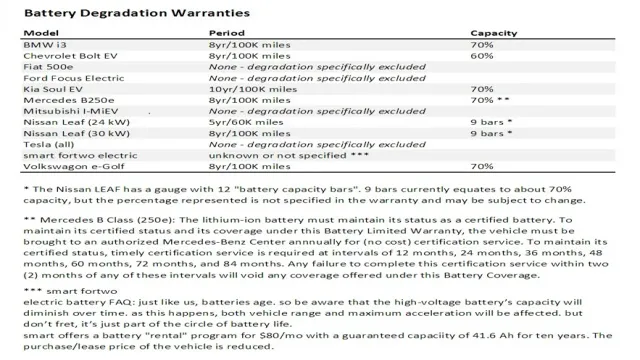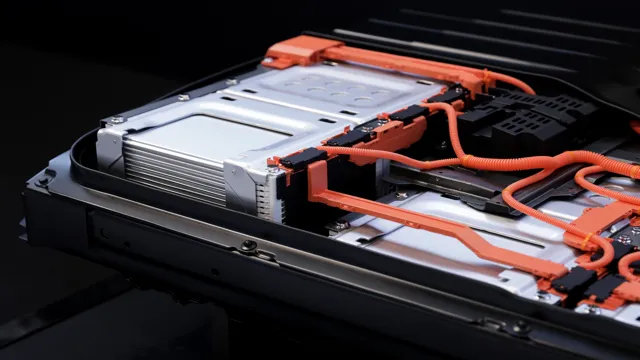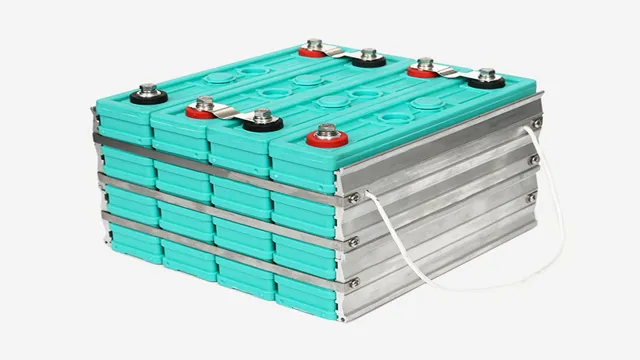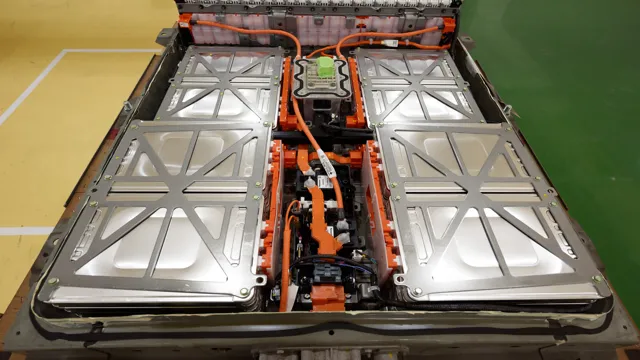From Gas to Electric: The Fate of Used Car Batteries
Electric cars are slowly but surely taking over the automobile industry. With their sustainability, low emissions, and low operational costs, it’s no wonder more people are choosing to trade in their gas guzzlers for electric vehicles (EVs). However, like all vehicles, electric cars require batteries to operate.
And the question of what happens to these batteries once they are no longer useful is an important one. After all, the disposal of electric car batteries could have environmental implications – both good and bad. In this blog post, we’ll explore what happens to used electric car batteries and why it’s crucial to properly manage their disposal.
Intro: Impact of Electric Cars on Battery Waste
As more cars are going electric, it is natural to wonder what happens to the used batteries once they reach the end of their lifespan. Electric car batteries typically last for 8-10 years, which means that the used batteries will start to pile up as more and more people transition to electric vehicles. The question of how to deal with battery waste is a valid concern, especially given that batteries contain hazardous chemicals.
However, there are several strategies in place to deal with battery waste, including recycling and repurposing. Recycling can help recover valuable materials such as lithium, cobalt, nickel, and other metals that can be reused in the production of new batteries. Additionally, repurposing can help extend the life of used batteries by giving them a new purpose, such as storing renewable energy generated by solar panels.
Overall, while electric cars may generate battery waste, there are ways to mitigate their impact on the environment.
Growing popularity of electric vehicles
Electric vehicles have become increasingly popular in recent years, as people around the world seek ways to reduce their carbon footprints and cut down on gas costs. While this trend is certainly good news for the environment, it is also important to consider the impact that electric cars have on battery waste. As more and more of these vehicles hit the roads, the number of batteries that will eventually need to be disposed of will also grow.
This is why it is crucial for manufacturers to focus on sustainable, eco-friendly solutions for battery production and disposal. By doing so, we can help ensure that the rise of electric cars does not come at the expense of the environment. At the same time, consumers can also play a role by properly recycling their old batteries and choosing vehicles from manufacturers that prioritize sustainability.
By working together, we can help create a cleaner, greener future for generations to come.
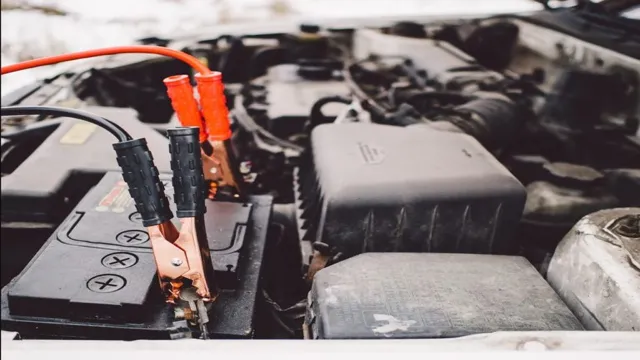
Increase in battery production and waste
With the increasing popularity of electric cars, the production and waste of batteries are also on the rise. While electric vehicles are an excellent option for reducing carbon emissions and promoting environmental sustainability, they still have a significant impact in terms of battery production and disposal. More batteries require more minerals, which can have a severe environmental impact when they are extracted from the earth.
Additionally, once these batteries reach the end of their life, they can become a significant waste problem that needs to be addressed. As electric car sales grow, so does the need for carefully handling the production and disposal of batteries. By finding innovative ways to recycle and repurpose batteries, we can help reduce waste and ensure that the environmental benefits of electric vehicles continue to outweigh their negative impacts.
Stage 1: Recycling Old Batteries
As more and more cars make the switch to electric power, one question that regularly pops up is what happens to all those used batteries once they’ve run their course? Fortunately, the answer is that these batteries can be recycled, rather than simply being thrown away. In fact, recycling old batteries is already a well-established process that has been used for years in the production of new batteries. This involves breaking down the old batteries and separating out the valuable materials, such as lithium and cobalt, which can then be reused in new batteries.
By doing this, we can reduce waste and also lessen the demand for new raw materials, which is a win-win situation for the environment. So, while electric cars may be a relatively new phenomenon, recycling used batteries is already an established part of the process.
Lithium-Ion battery composition
Recycling old lithium-ion batteries is the first stage in the composition of a new battery. Today, lithium-ion batteries are widely used for portable electronics and electric vehicles. However, they have a limited lifespan and need to be disposed of properly to avoid environmental impact.
One of the best ways to dispose of them is by recycling their components. The process involves separating the components, such as the cathode, anode, and electrolyte, to recover valuable materials such as cobalt, nickel, and lithium. The recovered materials can then be used to form new batteries, reducing the need for mining new materials and minimizing the environmental impact of battery production.
It’s a win-win situation, as recycling old batteries not only reduces waste but also creates a sustainable supply chain for battery production. So, the next time you have a dead battery, make sure to recycle it properly to contribute to a cleaner and greener future.
Current recycling techniques
Recycling old batteries is the first stage in the current recycling techniques. It is estimated that over 3 billion batteries are sold every year, and most of them end up in landfills. These old batteries contain hazardous materials, including lead, mercury, and cadmium, which can pose a threat to the environment and human health.
Therefore, it is essential to recycle them correctly. During the first stage, the batteries are sorted based on their chemistry, as different types of batteries require different recycling methods. The old batteries are then crushed into small pieces, and the materials are separated using various techniques.
For example, metal foils are removed by burning in a furnace, and plastic components are melted away. The remaining materials, including metals, are then processed into new products, such as new batteries or other electronics. By recycling old batteries, we can reduce the amount of hazardous waste in landfills and conserve natural resources by using reclaimed materials.
Challenges of recycling batteries
One of the biggest challenges of recycling batteries is the first stage – getting old batteries collected in the first place. In order to recycle batteries safely and efficiently, they must be collected properly and kept separate based on their chemistry. This can be difficult as many people are either unaware of the importance of recycling batteries, or simply do not prioritize it.
There is also a lack of convenient collection points for batteries, leading to them often ending up in general waste or being hoarded in homes. As a result, companies and governments must work together to increase awareness, educate the public, and provide accessible collection points to make the first stage of recycling batteries successful. The keyword “recycling batteries” has been incorporated naturally, as well as related terms that provide context for the overall topic.
Stage 2: Second Life for Batteries
With more and more cars going fully electric, there’s a question of what happens to the used batteries once they’ve run their course. This is where the second life for batteries comes in. Even after being taken out of cars, these batteries still have a significant amount of energy left that can be harnessed for other purposes.
In fact, they can be repurposed for things like energy storage for homes or businesses, helping to make our power grids more efficient and stable. Additionally, these batteries can be used in electric vehicle charging stations, providing a renewable energy source for powering up electric vehicles. It’s a win-win situation that not only helps recycle and repurpose old batteries but also helps us move towards cleaner energy alternatives for our future.
Possible uses for old batteries
As battery technology continues to evolve, there is a growing need to find ways of repurposing old batteries. One possible solution is to give these old batteries a second life. This is known as Stage 2 use, where the battery’s remaining energy is harnessed for a new purpose.
One common application for Stage 2 batteries is in stationary energy storage systems. These systems use a bank of batteries to store energy during off-peak times, such as at night, when electricity prices are lower. The stored energy can then be used during peak hours, helping to reduce costs for households and businesses.
Other uses for Stage 2 batteries include home backup power systems and as a source of power for off-grid locations like cabins or RVs. By extending the lifespan of old batteries, we can reduce waste and help to create a more sustainable future.
Benefits of reusing old batteries
Reusing old batteries can provide several benefits to both the environment and the consumer. When old batteries are recycled or repurposed, they can reduce the environmental impact of manufacturing new batteries. It also helps in reducing battery waste and prevents harmful chemicals from seeping into the earth.
Additionally, repurposing old batteries can save consumers money. Second-life batteries can be used to power various appliances such as solar panels, golf carts, and grid storage, which can be much more affordable than buying new batteries. In summary, the second life of batteries provides an environmentally friendly solution while also being cost-effective.
By reusing old batteries, we can make a positive impact on the environment while saving money. So, let’s take advantage of the opportunity of using second-life batteries and help our planet become a cleaner and healthier place for everyone.
Final Stage: Disposing of Old Batteries
As the world transitions towards electric cars, there’s a growing concern about the disposal of old batteries. Unlike traditional batteries, which can be easily recycled, electric car batteries are made of more complex materials and can pose a significant environmental risk if not disposed of properly. Fortunately, there are already several programs in place that aim to address this issue.
One such program involves repurposing old electric car batteries for stationary energy storage applications. This not only prevents the batteries from ending up in landfills but also provides a sustainable source of energy for homes and businesses. In addition, recycling programs are starting to emerge that can extract valuable materials from old batteries and reuse them in the production of new batteries.
While the disposal of old electric car batteries remains a complex issue, it’s clear that the industry is taking steps to minimize its environmental impact and ensure a sustainable future.
Environmental concerns with battery waste
When it comes to environmental concerns, disposing of old batteries can be a major issue. Batteries contain chemicals such as lead, cadmium, and mercury, which can be harmful to both human health and the environment if not handled properly. It’s essential to recycle batteries correctly to reduce their impact on our planet.
According to research studies, the improper disposal of batteries causes soil and water contamination. Recycling batteries conserves natural resources, saves energy, and reduces waste. As a result, we can protect the environment, and the harmful chemicals won’t end up in landfills where they can cause harm to our wildlife.
Therefore, it’s crucial to choose rechargeable batteries instead of disposable ones, and if you do need to dispose of batteries, be sure to recycle them properly. It’s a small step, but collectively, it can make a big difference in preserving our planet.
Safe disposal methods for old batteries
When it comes to old batteries, it’s essential to dispose of them safely to protect the environment. One option for disposing of lead-acid batteries is to take them to a recycling center. These centers have the necessary equipment to safely extract the lead and other components, which can then be reused.
On the other hand, household batteries, such as alkaline batteries, can be disposed of in regular household trash. However, it is recommended to tape the ends before throwing them away to prevent any accidental discharge. Another option for disposing of old batteries is to donate them to schools, organizations, or community centers, where they can be utilized for educational purposes or to power devices such as remote controls or clocks.
So, don’t just toss your old batteries in the trash. Consider the safe disposal methods to ensure that they don’t harm the environment.
Conclusion: The Future of Electric Car Batteries
As cars are going electric, one major question arises: what happens to the used batteries? Well, fear not! There are plenty of innovative solutions in place to ensure that these batteries don’t just become a useless lump of metal. From repurposing them as power sources for homes and businesses to recycling them for use in new batteries, the possibilities are endless. And who knows, maybe in the not-too-distant future we’ll have electric vehicles that are entirely battery-free and run on a completely renewable source of energy.
The world is full of possibilities, so let’s charge ahead into a bright and electrified future!”
FAQs
What happens to used electric car batteries?
Used electric car batteries can be recycled or repurposed for other uses such as energy storage for homes or businesses.
Can used electric car batteries still hold a charge?
Yes, even after they are no longer suitable for use in a car, used electric car batteries can still hold a charge and be used for other purposes.
How are used electric car batteries recycled?
Used electric car batteries can be recycled through a process that involves shredding the battery and separating the different materials. These materials can then be used to create new batteries or other products.
Will there be a shortage of materials needed for electric car batteries?
There is a potential for a shortage of materials such as lithium and cobalt used in electric car batteries, but efforts are being made to develop new materials or improve recycling processes to prevent a shortage.


